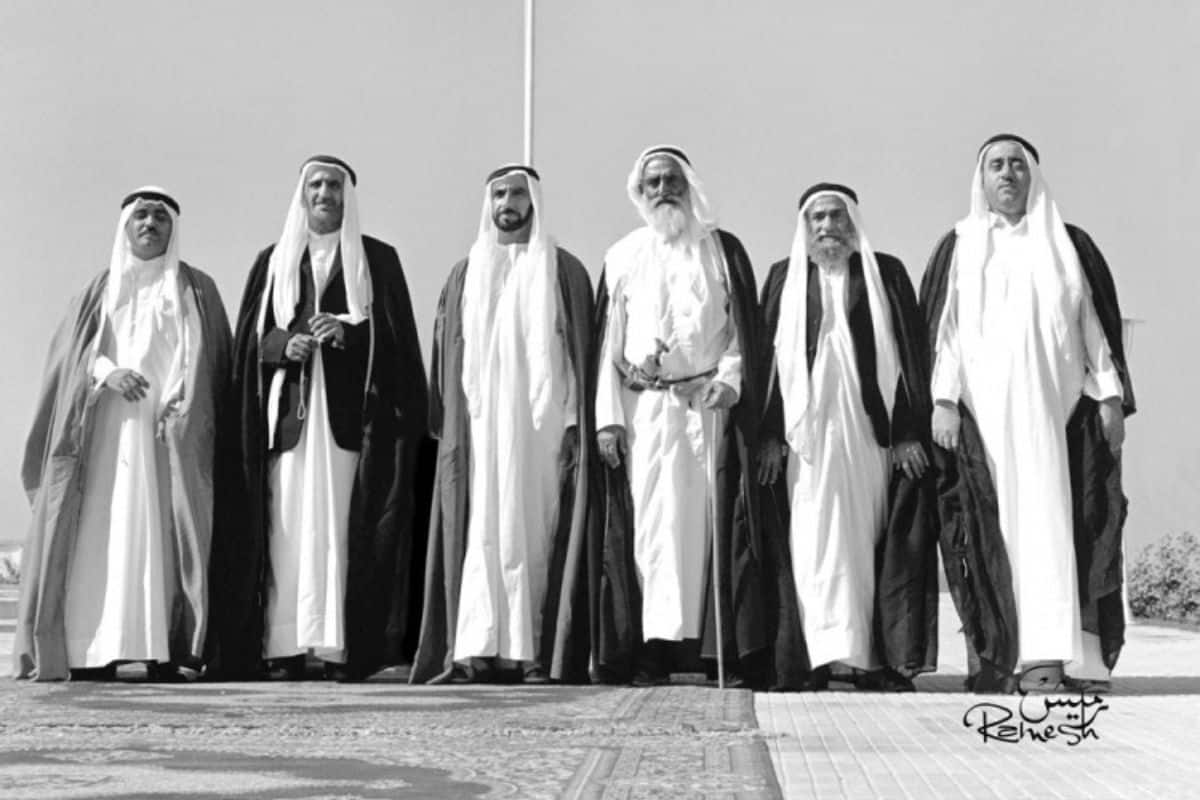In 2021 – to celebrate the UAE‘s 50th National Day – the Central Bank unveiled a commemorative AED50 banknote that would become a testament to the nation’s historic journey
The polymer note features a photograph of profound national significance: a captivating moment capturing the late His Highness Sheikh Zayed bin Sultan Al Nahyan, the visionary founding father of the UAE, signing the agreement that would transform six emirates into a unified nation on December 2, 1971.

The note’s reverse side displays the equally iconic ‘Spirit of the Union’ photograph, which has also become the official logo for UAE National Day.
However, the photograph wasn’t just any historical document, rather it was a legacy captured by Ramesh Shukla – a photographer who had witnessed and preserved a pivotal moment in the UAE’s creation.
This National Day, three years after the new banknote came into use, Arabian Business sat with 85-year-old Ramesh Shukla, to know about his journey so far, and of his camera – which quietly documented a nation’s ascent from humble beginnings to global prominence.
Where it all began

Born in 1939, Shukla first arrived in the UAE in 1965, after a five-day journey by ship from Bombay (present day Mumbai) to Sharjah port.
With his Rolleicord camera – given to him by his father when he was 15 – the then 26-year-old’s first job was in Dubai, where he started Neelkamal Studios with a friend.
“We had a lot of customers coming in, I used to sleep in my studio,” he recalled, adding that he would visit the Creek early in the morning.
“At 6am I used to go to the Creek side, where I would observe people fishing. I used to click their photos, and everybody around me used to wonder what I was doing,” Shukla told Arabian Business, adding that he would typically work as a photographer for groom’s weddings, whereas his wife “Taru would document ceremonies hosted by the bride’s family.”
“My wife and I would then develop the images from the camera roll, early in the morning or late at night, as we did not have dark rooms at the time,” he said.
They would develop the photographs using thalis (large plates or trays), often used to serve a variety of food in South Asia, Southeast Asia and the Caribbean. Little did they know, they were more than just photographers rather they were archivists of a nation’s emerging identity.
Life took a turn for Shukla when he was called to document the Sharjah camel race in 1968. With his trusty camera by his side, he travelled from Dubai to Sharjah on a bicycle to photograph the race.
“I was told that His Highness Sheikh Zayed bin Sultan Al Nahyan, His Highness Sheikh Rashid bin Saeed Al Maktoum, and many other royals and dignitaries would be there. That was when my life changed forever,” he said.

Shukla recounted the distinctive moment when the founding fathers, avoiding formal seating, crouched on the ground to closely observe the race. Mirroring their posture, Shukla himself lay prostrate to capture the defining photograph from ground level.
“When His Highness Sheikh Zayed spotted me on the second day of the race, he said “ta’al”, asking me to come over. I showed him the pictures I had clicked of him the previous day, and he signed it and gave me his pen. He then tapped my shoulder and called me “Fannan,” which means artist in Arabic,” Shukla said.
‘My life started’ after that moment, says Ramesh Shukla
![He [Sheikh Zayed bin Sultan Al Nahyan] then tapped my shoulder and called me “Fannan,” which means artist in Arabic, Shukla said](https://www.arabianbusiness.com/cloud/2024/12/02/Ramesh-Shukla-with-Sheikh-Zayed-1024x683.jpg)
Following his success at the Sharjah camel race, Shukla developed a deep friendship with UAE royals so much so that he was invited to several official events as a photographer.
“On December 2, 1971, I was asked to go to the Union House in Jumeirah Beach Road. I witnessed all the UAE rulers from each emirate congregate over there, and was asked to photograph the unification agreement, establishing the six emirates – Abu Dhabi, Dubai, Sharjah, Ajman, Umm Al-Quwain and Fujairah, as part of the newly formed United Arab Emirates. My life started after this,” he said, adding that the picture he captured of the UAE leaders at the time continues to be his “greatest” accomplishment.

Dubbed since then as the UAE royal photographer, Shukla’s life’s work is preserved at the Etihad Museum, metro stations, and art galleries worldwide, today.
His son Neel continues his legacy through the Four Seasons Ramesh Gallery, ensuring that the story of a photographer who became a national chronicler continues to inspire.










